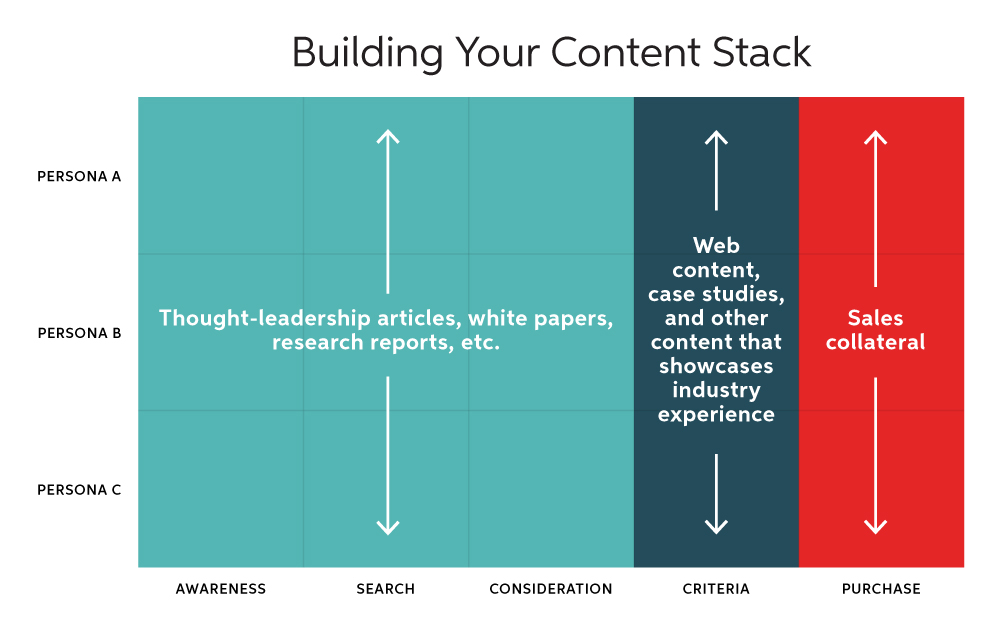Implementing an Editorial Board for Your B2B Business

We know that major publications like The New York Times, Washington Post, and even Cambridge University Press have editorial boards. These groups of experts dictate the tone and overall direction of the editorial policy, making them essential to the content-production process.
But for the most part, the concept of editorial boards has yet to make it to content marketing. There’s a Medium article or two about it, but most companies haven’t incorporated this step into their process. In fact, many are still struggling to understand that their editorial calendar doesn’t constitute their editorial strategy.
What Editorial Boards Establish for Businesses
Editorial boards underscore the idea of key stakeholders within content marketing. And you need these key stakeholders in the same room to:
- Get on the same page. If the sales team is thinking one way, marketers are thinking another way, account managers have a third set of things to worry about, and so on … then the execution of solid content marketing becomes improbable, if not impossible.
- Check that your content is aligned to your strategy. Does all your content ultimately serve the same big-picture purpose?
- Establish your content stack. (More on that later.)
Assembling Your Editorial Board
Your editorial board requires representation from both your team and your agency partner’s team. Here’s what that should look like:
On your side, you’ll need:
- Content manager/director/VP: The person who “owns” your content approach.
- Brand manager/director/VP: The person who “owns” your overall brand.
- Sales manager/executive: Someone who understands how your sales team best works with prospects and how content plays into those conversations.
Your agency should bring in:
- Account director: Makes the trains run and knows every nuance of your business.
- Editorial director: Understands voice and tone of your business, your audience, and your content needs.
- Brand planner: Knows the touchpoints necessary to move a brand forward.
- Digital media strategist: Master of ad buys/spend/paid promotion who is deeply familiar with the overall digital ecosystem. Performance metrics should inform much of this meeting’s direction, so make sure you have someone there to lay that out for the team.
Focus on Your Content Stack
The key documents that will help you navigate this conversation are your editorial calendar and your messaging strategy. Your messaging strategy is your guiding light — all that background material (audience personas, voice and tone guides, brand narrative, etc.) that informs your content strategy.
With help from this, you’ll spend the majority of the meeting workshopping your editorial calendar. The more comprehensive the editorial calendar the better — i.e., a document that includes topics, summaries, SMEs, content goals, post dates, promotion plans, channel alignment, etc. — but the main thing you need to evaluate in this meeting is your content stack.
A good content stack means ensuring you have content that connects with each segment of your audience in each part of the purchase cycle. It maps out something like this:

When none of those 18 (or 12, or 6, or 36 depending on how many audience personas you have) boxes are empty, you’ve got a solid content stack. That’s the end goal. If you can do that, that means you’ve got content that reaches your audiences in all the right places.
What You Should Walk Away With
The end goal is a great, comprehensive, fleshed-out editorial calendar that earned a stamp of approval from all present parties. Plus, at a higher level, you’ve got sales, content creation, trains-running account/project management, and higher-ups speaking the same language and thinking about content, and its role, in the same way.
When there is “content drift” — meaning people are producing content solely for the sake of producing it, or just blindly following a calendar — each stakeholder can easily get on a different page, with accounts/projects focusing on deadlines, writers focusing on word count, sales ignoring the incoming content, and on and on, rather than focusing on the most important thing: making an impact on your audience.
Want to get strategic about your content? Contact us.


